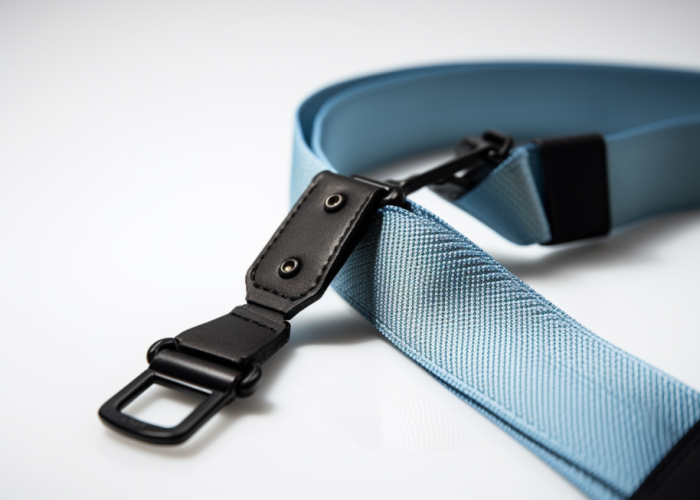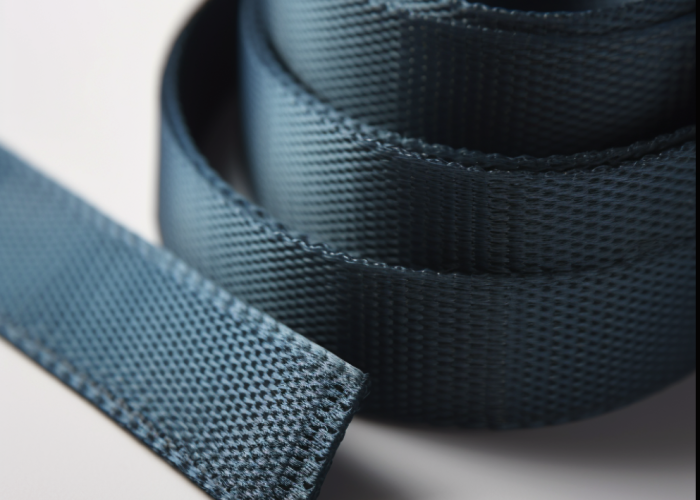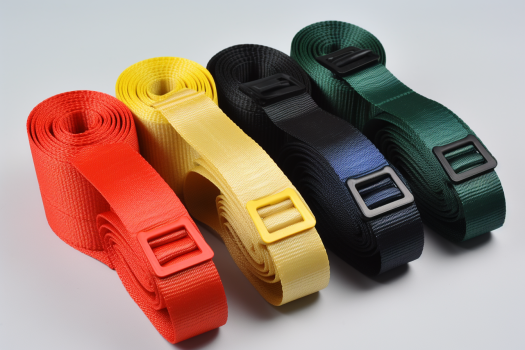Engineering teams selecting webbing materials must understand nylon’s performance limitations before product specification. While nylon offers exceptional strength and shock absorption, several disadvantages can impact performance and reliability. Custom manufacturing partnerships can mitigate these limitations through design optimization.
Nylon webbing has several drawbacks: it degrades under UV exposure, absorbs moisture, becomes brittle in cold weather, costs more than alternatives, and is difficult to recycle. These issues can be minimized with protective coatings and custom engineering.
Explore key disadvantages of nylon with performance data and discover manufacturing solutions to overcome its limits while maximizing benefits.


Webbing manufacturing expert with 15+ years of experience helping product developers build high-performance straps for industrial, medical, and outdoor use.
Yes, nylon webbing degrades in sunlight. UV exposure can reduce its strength by up to 50% in the first year and cause failure within 2–3 years if unprotected. UV radiation breaks down the polyamide molecular chains in nylon fibers, creating a progressive weakening that starts at the surface and penetrates deeper over time. This degradation occurs faster in high-altitude environments, desert climates, and marine applications where UV intensity is amplified by reflection.
KEY POINTS:
UV degradation in nylon follows a predictable pattern that engineers must factor into safety calculations. Initial exposure causes surface discoloration and brittleness, with strength loss accelerating exponentially rather than linearly. ASTM D4329 UV testing protocols with certified laboratories help establish realistic service life expectations and provide comprehensive test reports for design validation.
Manufacturing capabilities for UV protection include carbon black-infused nylon for maximum protection (ideal for military tactical gear), UV-stabilized variants with chemical additives extending outdoor life by 300-500% (proven in marine hardware), and custom protective coatings for color-critical applications. Recent successful projects include UV-resistant webbing for desert camping equipment, marine-grade straps for boat manufacturers, and high-altitude gear maintaining strength at 15,000+ feet elevation.
Strategic design optimization minimizes UV exposure through component placement in shaded areas, protective housings for load-bearing elements, and hybrid material approaches. Engineering consultation during the design phase helps determine optimal protection strategies and cost-effective solutions that meet performance requirements. Contact experienced manufacturers to discuss UV testing services and custom UV-resistant webbing specifications for your application.
Heat affects nylon webbing by weakening its strength above 150°F and causing permanent damage above 200°F. Below -40°F, it becomes brittle. Extreme temperatures alter its molecular structure, reducing flexibility, stability, and impact resistance.
KEY POINTS:
Temperature sensitivity in nylon stems from its glass transition temperature around 122°F. Above this point, molecular chains become more mobile, reducing stiffness and load-bearing capacity. Extended exposure above 200°F causes thermal degradation, breaking polymer chains and creating permanent weakness.
Cold temperatures present different challenges. Below freezing, nylon becomes rigid and prone to cracking under impact loads. Applications like winter sports equipment and arctic industrial use require careful consideration of reduced flexibility and shock absorption at sub-zero temperatures.
Temperature-resistant nylon variants address these limitations through specialized formulations and heat stabilizers. High-temperature grades maintain performance up to 300°F for automotive applications, while cold-resistant formulations retain flexibility down to -65°F. Recent applications include engine compartment webbing and cold weather military gear.

Yes, nylon webbing absorbs moisture due to its hygroscopic nature. It can take in up to 8.5% of its weight in water, leading to dimensional changes, reduced strength, and altered handling. This is caused by nylon’s polar amide groups attracting water molecules.
KEY POINTS:
Moisture absorption occurs through hydrogen bonding between water molecules and amide groups in nylon’s polymer chain. Full saturation takes days in high humidity, with complete drying requiring similar timeframes. Absorbed moisture acts as a plasticizer, increasing flexibility while reducing tensile strength.
Dimensional changes create practical challenges for precision applications. Webbing can expand 1-2% in length and increase in thickness, affecting buckle fit and tension settings. Marine applications and humid industrial environments must account for these variations in design tolerances.
Chemical resistance also changes with moisture content, as water facilitates chemical attack and accelerates degradation. Wet nylon shows increased susceptibility to acids and some organic solvents compared to dry material.
Moisture-resistant formulations and protective treatments minimize these effects. Hydrophobic coatings, sealed edge treatments, and modified polymer chemistries reduce water uptake while maintaining beneficial properties.
Nylon webbing demonstrates with 15-20 year life spans indoors and 5-8 years outdoors, offering 6,000-12,000 pound breaking strengths while maintaining 85-90% original strength after extended environmental exposure.
KEY POINTS:
Abrasion resistance varies between nylon grades and weave constructions. Standard nylon shows moderate abrasion resistance but can develop surface fuzzing when exposed to concrete, metal edges, or sandy conditions. High-tenacity fibers and tight weave constructions improve performance for demanding applications.
Edge durability presents particular challenges. Raw nylon edges fray without proper finishing, requiring heat sealing, ultrasonic cutting, or sewn edge binding for long-term reliability. This processing adds cost but prevents progressive deterioration.
Cut resistance limitations make nylon unsuitable where deliberate cutting or sharp edge contact is expected. While excellent for load-bearing applications, nylon offers minimal protection against knives or broken glass compared to aramid alternatives.
Manufacturing techniques enhance durability through specialized treatments. Abrasion-resistant coatings, reinforced edge treatments, and hybrid constructions provide solutions for challenging applications like material handling equipment and construction straps.

Yes, nylon webbing stretches more than other materials—up to 30% at break and 3–8% under load. While good for shock absorption, this high elasticity can be a drawback in applications needing stability or precise positioning.
KEY POINTS:
Nylon’s elastic properties create both advantages and disadvantages. The material’s stretch and recovery ability makes it ideal for shock loads and vibration dampening but problematic for systems requiring precise positioning or minimal deflection under load.
Stretch characteristics vary with temperature, load rate, and moisture content. Higher temperatures increase elasticity, while rapid loading produces less stretch than sustained loading due to nylon’s viscoelastic behavior.
Working load stretch affects applications like cargo securement and lifting slings. A 1% stretch in a 10-foot strap equals 1.2 inches of movement, unacceptable for precision applications but beneficial for dynamic load absorption.
Low-stretch formulations and construction techniques address these limitations. Pre-stretched webbing, high-modulus fibers, and hybrid constructions with low-stretch reinforcement provide solutions where stretch must be minimized while maintaining nylon’s other beneficial properties.
Nylon webbing is more expensive due to higher raw material costs, complex manufacturing, and specialized equipment. It typically costs 15–30% more than polyester but offers superior performance, which can affect budgets in large-scale use.
KEY POINTS:
Raw material costs drive the primary price difference. Nylon 6,6 resin commands premium pricing due to complex synthesis and higher energy requirements. High-tenacity nylon fibers used in performance applications carry further cost premiums.
Manufacturing adds to the cost differential through specialized equipment requirements. Nylon’s hygroscopic nature requires controlled humidity during production, while thermal sensitivity demands precise temperature control during processing.
Volume economics significantly impact pricing, with 20-40% cost reductions possible for large orders. Custom colors, specialized treatments, and non-standard specifications carry additional premiums for small quantities.
Cost-benefit analysis often justifies nylon’s premium for performance-critical applications. Superior strength-to-weight ratio means thinner webbing can carry equivalent loads, potentially reducing overall system costs through weight savings and improved performance.
No, nylon webbing is not environmentally friendly. It is non-biodegradable, hard to recycle, and requires energy-intensive production that emits high carbon levels. Its durability extends product life but creates disposal challenges.
KEY POINTS:
Environmental impact assessment reveals complex trade-offs between production impacts and product longevity. Nylon production generates 6-9 kg of CO2 per kilogram of material, substantially higher than natural alternatives, while petroleum-based feedstock dependency contributes to resource depletion concerns.
End-of-life management presents ongoing challenges as nylon webbing persists in landfills for 30-40 years without degrading. Recycling infrastructure remains limited due to contamination and mixed materials, though chemical recycling processes exist with high energy requirements.
However, nylon’s exceptional durability can offset some environmental impacts through extended product life cycles. Applications where nylon lasts 2-3 times longer than alternatives may show lower overall environmental impact despite higher initial production emissions.
Sustainable alternatives are emerging to address environmental concerns. Bio-based nylon from renewable feedstocks, recycled nylon from post-consumer waste, and design-for-recycling approaches provide options for environmentally conscious projects, though availability remains limited.
Nylon webbing’s disadvantages—UV degradation, moisture absorption, temperature sensitivity, higher costs, stretch characteristics, durability limitations, and environmental impact—require careful consideration during product development. Understanding these limitations enables informed material selection and design optimization. Engineering consultation during the design phase helps identify solutions that maximize nylon’s benefits while addressing specific application challenges. Contact us to explore manufacturing solutions tailored to your nylon webbing requirements
Choose nylon when applications require superior shock absorption, high strength-to-weight ratios, excellent fatigue resistance, or dynamic load distribution capabilities that outweigh its disadvantages. Applications like lifting slings, safety harnesses, and vehicle recovery straps benefit from nylon’s unique elastic properties.
Engineering consultation identifies potential issues early and recommends hybrid approaches, protective treatments, strategic component placement, and alternative constructions that minimize exposure to damaging conditions. Design optimization reduces performance risks while maintaining nylon’s beneficial characteristics.
Protective coatings and treatments significantly reduce but rarely eliminate nylon’s inherent disadvantages completely. UV-blocking coatings extend outdoor life 3-5 times, hydrophobic treatments reduce moisture absorption by 60-80%, and abrasion-resistant finishes double surface durability.
Early collaboration enables proactive material selection, identifies potential failure modes, optimizes safety factors, recommends cost-effective protection strategies, and ensures manufacturing feasibility before design finalization. This approach prevents costly redesigns and improves overall product reliability.
Yes, custom manufacturing significantly reduces nylon disadvantages through UV-stabilized formulations, moisture-resistant treatments, temperature-resistant grades, abrasion-resistant coatings, low-stretch constructions, and protective edge finishes. These specialized solutions can extend service life by 300-500% and improve performance characteristics for specific applications.
ASTM-certified testing includes UV exposure simulation, tensile strength validation, temperature cycling, moisture absorption analysis, abrasion resistance measurement, and dimensional stability assessment. Comprehensive test reports support design validation and regulatory compliance requirements.